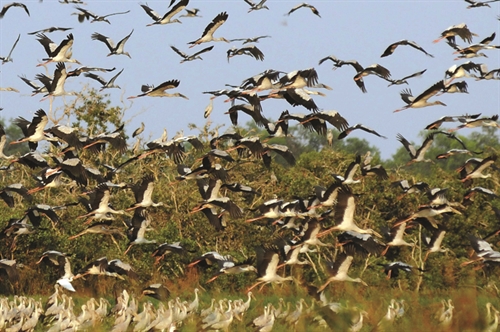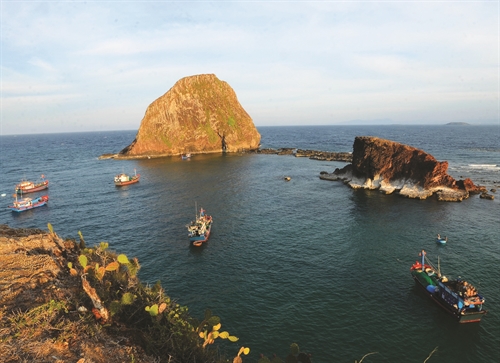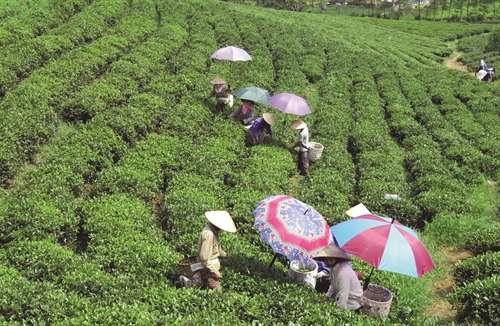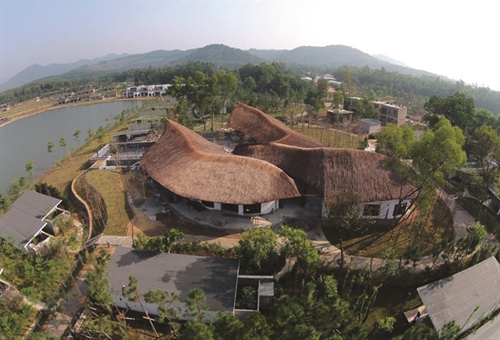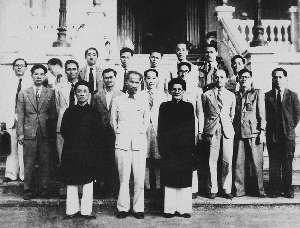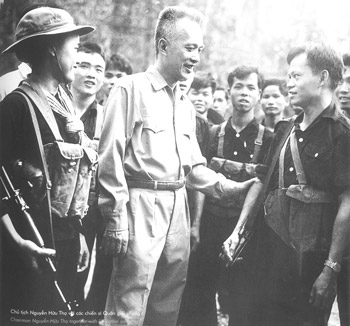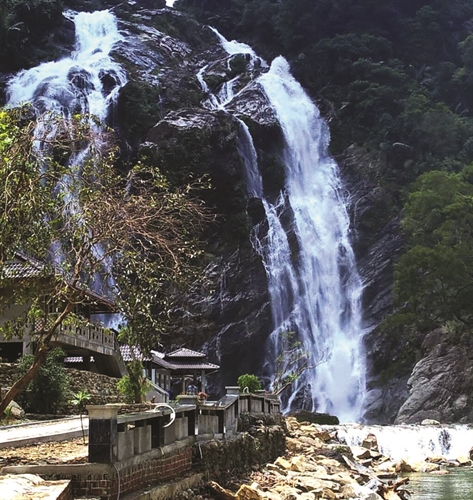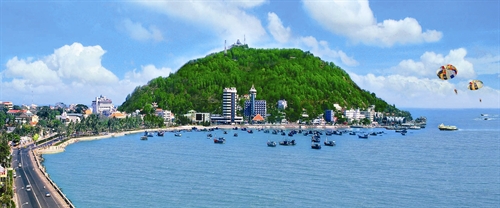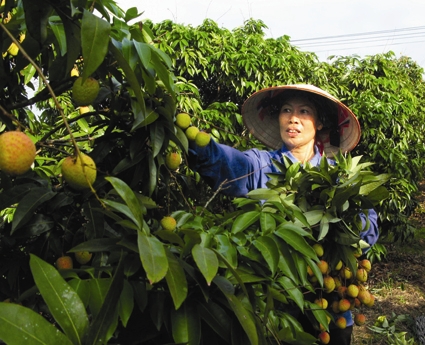Located about 50km to the south of Hanoi, Ha Nam province borders Hung Yen and Thai Binh provinces to the east, Ninh Binh province to the south, Nam Dinh province to the southeast and Hoa Binh province to the west. Covering 859.5 square kilometers, Ha Nam is the second smallest province in the country and has a population of 804,650 people with Kinh (Viet) being the most populous, followed by Tay, Muong and Hoa. It has the capital city of Phu Ly and five districts of Duy Tien, Kim Bang, Ly Nhan, Thanh Liem and Binh Luc. The province is the gateway to the Red River delta and on the North-South traffic route with convenient road, railway and waterway systems and has 2.2 km-long Yen Lenh bridge spanning the Red River on national highway 38 to Hung Yen province, which gives a great advantage for Ha Nam to promote exchange and cooperation with other northeastern provinces and Hai Phong seaport.
Foreign direct investment attraction
“Ha Nam province always considers investment cooperation as the most important task to promote its socio-economic development,” affirmed Nguyen Dinh Khang, member of the Communist Party of Vietnam Central Committee and secretary of the province’s Party Committee.
At a conference on promotion of investment in Ha Nam province held in the province in early August, the provincial Party chief said to facilitate production and business activities of domestic and foreign-invested enterprises, the province had paid due attention to, and created the most favorable investment environment for, investors, with ten firm commitments made.
Chairman of the provincial People’s Committee Nguyen Xuan Dong said the province would provide investors with incentives on land, infrastructure facilities, administrative procedures and land allocation for enterprises to build accommodations for their employees.
The province would be consistent in its investment policy and work hard to improve its competitiveness and promptly address difficulties and hindrances facing investors, Dong stressed.
Regarding investment attraction, Nguyen Van Oang, director of the Ha Nam Planning and Investment Department, said the province has always prioritized the attraction of enterprises possessing hi-tech and environment-friendly technologies.
 |
| A corner of Phu Ly city, Ha Nam province __Photo: Internet |
To attract investors to industry, hi-tech agriculture and commerce-service-tourism sectors, the provincial authorities have offered them numerous incentives. For example, supporting industry investors in the Dong Van III industrial park are entitled to land rental exemption for at least three years and for another 20 years after their projects are commissioned.
The provincial authorities have also offered land rent rates lower than those in neighbor localities. A project with an operation duration of up to 70 years will have to pay a land rental of under USD 55 per square meter in the Dong Van III industrial park and may be exempted from workshop rental for three to six months. Infrastructure will be ready for investors in hi-tech agricultural production zones to the fences of their projects, in addition to the highest incentives provided by the Government.
Regarding taxation, hi-tech and supporting industry projects, projects manufacturing hi-tech products and hi-tech agricultural production projects will enjoy a corporate income tax rate of 10 percent for 15 years after being entitled to tax exemption for four years and 50-percent tax reduction for subsequent nine years. In the meantime, other projects in industrial parks and Thanh Liem, Ly Nhan and Binh Luc districts will enjoy a corporate income tax rate of 17 percent for 10 years after being entitled to tax exemption for two years and 50-percent tax reduction for subsequent four years.
In addition, Ha Nam will provide businesses operating in the province with human resource training support and skilled workers.
According to the provincial Planning and Investment Department, in the first ten months of 2016, Ha Nam granted investment licenses to 25 new FDI projects totaling USD 585.3 million and permitted 71 existing projects to add USD 109.7 million to their registered investment capital. The above projects are specialized mainly in electronics, textile and garment, household utensil production and environmental protection. To date, Seoul Semiconductor Vina Ltd. Co. invested by the Republic of Korea (RoK), a USD 300 million-worth project manufacturing LED chip, components and modules is the biggest FDI project in the province.
The province has so far attracted a total of 180 FDI projects, of which 148 have commenced operation, while the rest are under construction. The RoK is the top investor with 92 projects totaling over USD 1 billion; followed by Japan, 55 projects; China, Hong Kong and Taiwan, 22 projects and the US, three projects.
As a result, Ha Nam ranks sixth in the country’s foreign direct investment (FDI) attraction in September and October this year, reported the Foreign Investment Agency of the Ministry of Planning and Investment.
The province is to date home to five operating industrial parks covering a total area of 1,128 hectares, including the 221-hectare Dong Van I, 320-hectare Dong Van II, 326-hectare Chau Son, 131-hectare Hoa Mac and 130-hectare Dong Van III industrial parks. In addition, three others - the Dong Van IV, Thai Ha and Thanh Liem industrial parks - have been zoned off.
Ha Nam has set a target of attracting 40 FDI projects and USD 335 million in registered FDI capital this year and USD 450 million per year in the 2016-2020 period.
Hospitality potential
Located in the Red River delta, Ha Nam province is home to a number of ancient cultures, including the Dong Son culture. In addition to well-preserved traditional folk arts, including “hat cheo” (traditional opera) and “hat chau van” (ritual singing), it boasts as many as 1,784 relics and many priceless tangible and intangible cultural heritages such as the Ngoc Lu bronze drum dating from the glorious development period of Dong Son culture about 3,000 years ago, and the Bac Ly bronze book dating from the 15th century - the best preserved one of the four surviving ancient books.
The province has more than 40 craft villages famous for silk, weaving, embroidery, drum making and carpentry. The most prestigious are Nha Xa silk village, Ngoc Dong bamboo and rattan weaving village, and An Hoa embroidery village. Over 100 traditional festivals are organized every year in the province.
Ha Nam’s tourism sector plans to become its spearhead sector under the province’s master plan on tourism development through 2020, with a vision toward 2030.
The province now has a total of 16 hotels, 50 guest houses and 11 travel agents.
According to deputy director of the provincial Culture, Sports and Tourism Department Tran Van Tien, Ha Nam welcomed 15,000 tourists from China, the Republic of Korea and Japan and earned a turnover of around VND 182 billion in the first ten months of the year.
The province expects to receive around 920,000 tourists and earn a gross profit of VND 210 billion this year.
To achieve the targets, the local hospitality sector will introduce local tourist spots in the mass media, the Vietnam National Administration of Tourism website and the provincial e-portal and website, in addition to outdoor billboards. It will publish provincial tourist maps and leaflets on local tourist attractions.
The sector will also encourage all economic sectors to involve in tourism activities through capital contribution or make their own investment in developing tourist products.
In particular, the tourism sector will work with the culture and sports sector in developing relic, festival and spiritual tourism and with the rural communities in developing rural eco-tourism and traditional craft village tourism.- (VLLF)
| Ha Nam’s 10 firm commitments toward investors: 1. To supply enterprises with round-the-clock power. 2. To ensure necessary infrastructure and provide essential services to enterprises, including electricity, water, telecommunications, collection and disposal of wastewater and wastes. 3. To quickly settle administrative procedures in which the grant of an investment certificate will be no more than three days. 4. To provide enterprises with support in training workers and supplying well-disciplined skilled workers. 5. To transfer clear land areas for building accommodations for workers, social infrastructure and entertainment facilities. 6. To provide maximum support to enterprises that wish to expand production, change their production and business plans or modify their investment certificates. 7. To perform e-customs procedures in industrial parks. 8. To ensure security and order in areas surrounding enterprises and guarantee the safety and property of their employees. 9. To ensure there are no industrial strikes. 10. To set up hotlines for the Secretary of the provincial Party Central Committee and Chairman of the provincial People’s Committee to receive and settle enterprises’ proposals.- |
